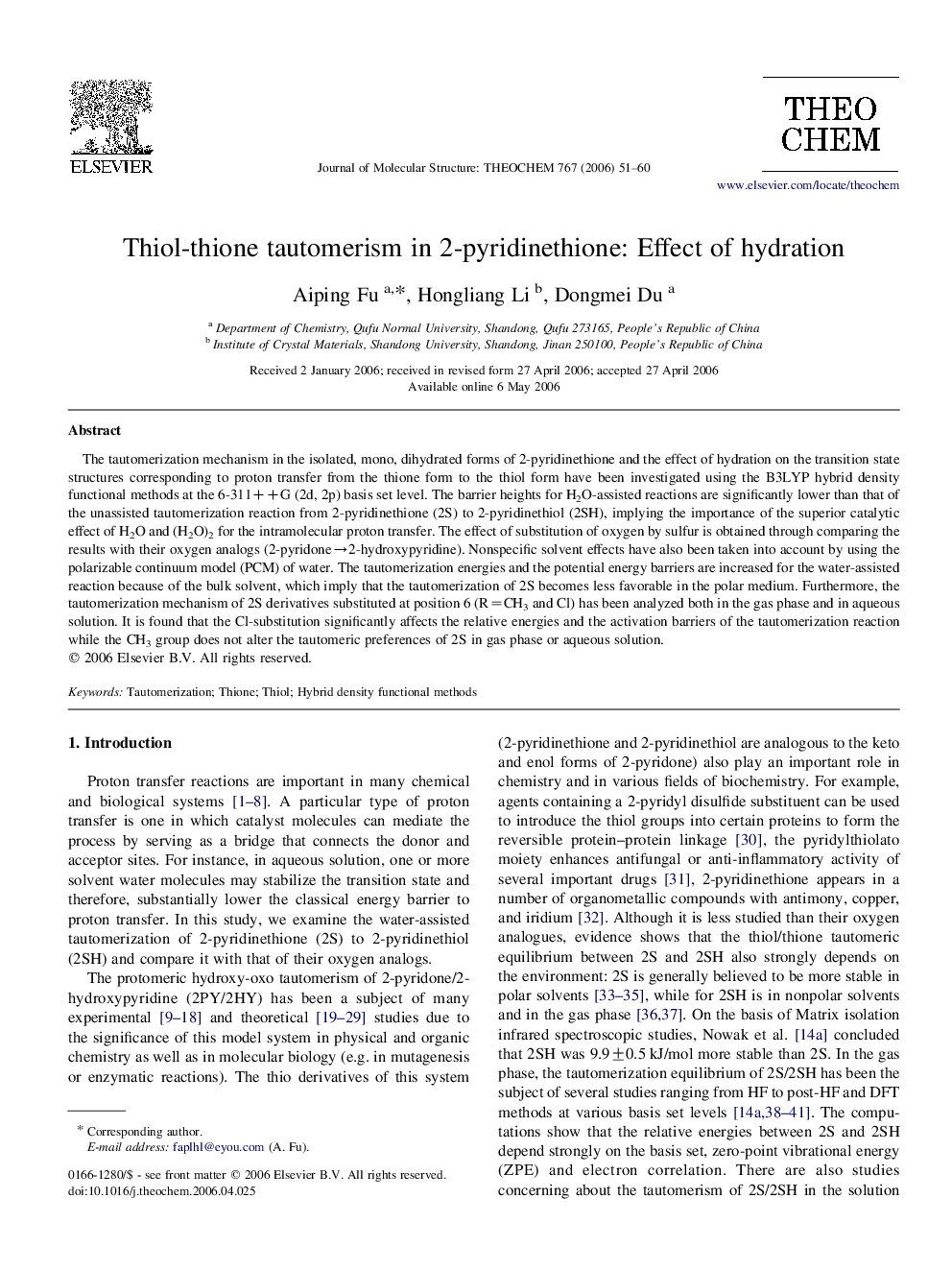| Article ID | Journal | Published Year | Pages | File Type |
|---|---|---|---|---|
| 5418423 | Journal of Molecular Structure: THEOCHEM | 2006 | 10 Pages |
Abstract
The tautomerization mechanism in the isolated, mono, dihydrated forms of 2-pyridinethione and the effect of hydration on the transition state structures corresponding to proton transfer from the thione form to the thiol form have been investigated using the B3LYP hybrid density functional methods at the 6-311++G (2d, 2p) basis set level. The barrier heights for H2O-assisted reactions are significantly lower than that of the unassisted tautomerization reaction from 2-pyridinethione (2S) to 2-pyridinethiol (2SH), implying the importance of the superior catalytic effect of H2O and (H2O)2 for the intramolecular proton transfer. The effect of substitution of oxygen by sulfur is obtained through comparing the results with their oxygen analogs (2-pyridoneâ2-hydroxypyridine). Nonspecific solvent effects have also been taken into account by using the polarizable continuum model (PCM) of water. The tautomerization energies and the potential energy barriers are increased for the water-assisted reaction because of the bulk solvent, which imply that the tautomerization of 2S becomes less favorable in the polar medium. Furthermore, the tautomerization mechanism of 2S derivatives substituted at position 6 (R=CH3 and Cl) has been analyzed both in the gas phase and in aqueous solution. It is found that the Cl-substitution significantly affects the relative energies and the activation barriers of the tautomerization reaction while the CH3 group does not alter the tautomeric preferences of 2S in gas phase or aqueous solution.
Keywords
Related Topics
Physical Sciences and Engineering
Chemistry
Physical and Theoretical Chemistry
Authors
Aiping Fu, Hongliang Li, Dongmei Du,
